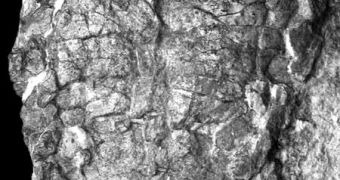Turtles are grandmas amongst present-day reptiles. And it's not only about their slower movements. They appeared 250 Ma ago, before snakes, crocodiles and dinosaurs emerged. But even the oldest known turtles already had a well developed shell. Modern turtles differ a lot from those early ancestors, but many rushed to attribute them a very old age. A newly-found fossil backs the idea that modern turtles have a much more recent origin.
Modern turtles are split into two main divisions: the Cryptodira and the Pleurodira - based on the skull insertion place of the muscles closing the lower jaw. Pleurodira hide their head inside the shell laterally, exposing a side of the neck, while most Cryptodira can retreat their head into the shell in a back-and-front plan.
In the 1970s, paleontologist Eugene Gaffney of the American Museum of Natural History (AMNH), in New York City, after making the first detailed analysis of turtle fossils, came to the conclusion that most ancient species fitted in one of these two modern groups. His results pointed to a common ancestry of both groups in the Late Triassic, 210 million years ago.
But a 2007 analysis made by paleontologist Walter Joyce of Yale University, published in the Bulletin of the Peabody Museum of Natural History, showed that many fossil genera were very different from either the Cryptodira or the Pleurodira groups, belonging to other groups of extinct turtles. This pointed that the two modern groups evolved about 150 million years ago, in the late Jurassic.
The new fossil was found in central Patagonia by an American-Argentinian team. It is 35 cm (1.2 ft) long, and the fossilized shell and skull were encountered in ancient lake rocks, 160 to 146 million years old, a period scarce in turtle fossils. The new fossil, called Condorchelys, has been described and analyzed by Juliana Sterli, a Ph.D. student at the Museo de Historia Natural de San Rafael in Mendoza, Argentina.
"Condorchelys doesn't belong to the Cryptodira or Pleurodira and fits Joyce's hypothesis that the modern groups are at least 60 million years younger than previously thought," said Sterli.
This means that Cryptodira or Pleurodira could have appeared in the Late Jurassic or Cretaceous, much earlier than previously thought.

 14 DAY TRIAL //
14 DAY TRIAL //